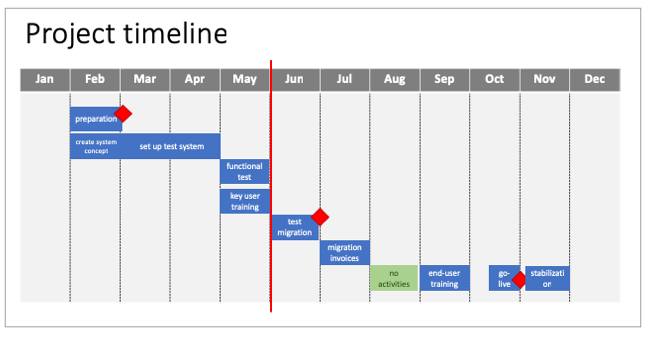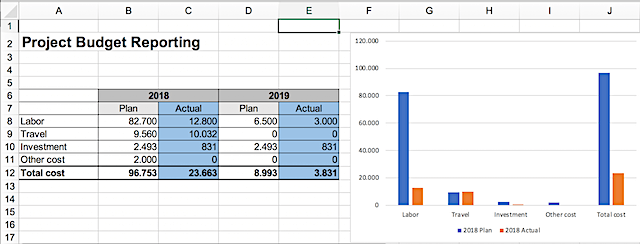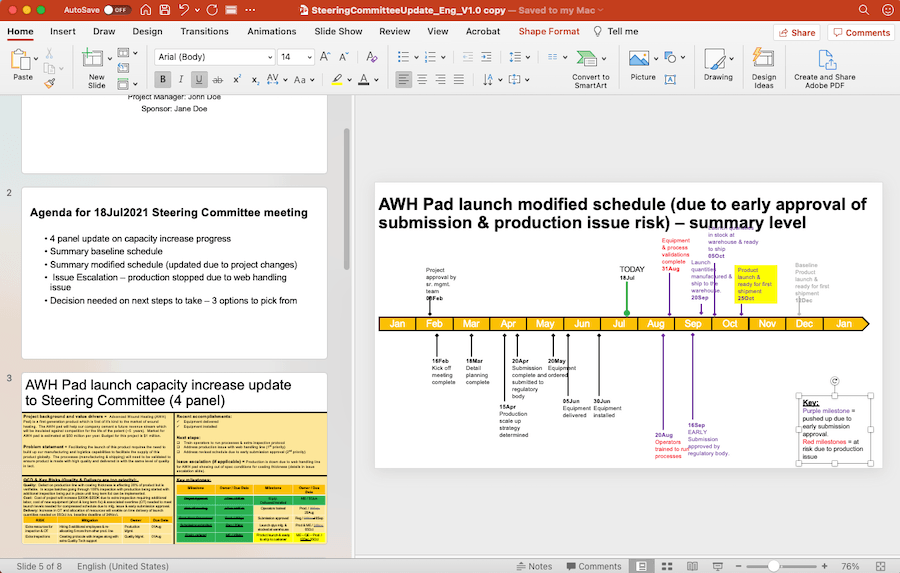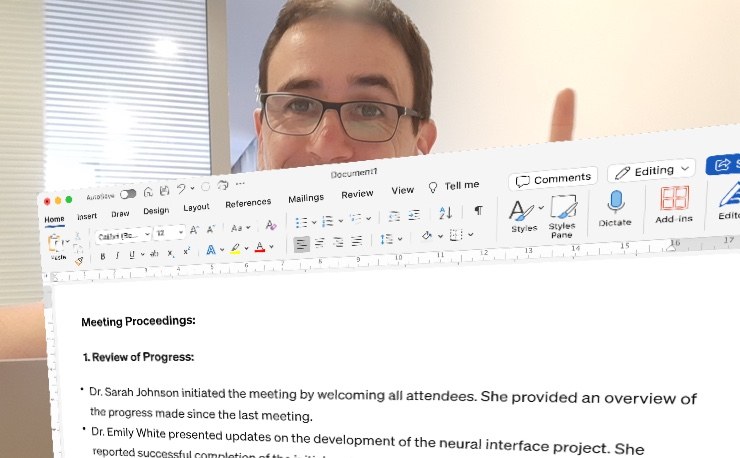What is a steering committee?
And what role does it play in your project?
That’s what I’m going to show you here.
Plus: How to run a successful steering committee meeting.

What is a steering committee?
A steering committee is a group of people, usually managers.
It is formed to oversee and support a project from management level.
Committee members are selected based on their stake in the project. In other words: A steering committee should represent the main stakeholders. The customer, the contractor and the departments most affected by your project.
Those who sit in the committee are usually not working in the project. It’s the project manager (you) with his team who is implementing the project.
Often, steering committees include C-level executives like CEOs or CFOs. Why? Projects are closely related to a company’s strategy and cost a lot of money. And executives have a keen interest in making sure the money is well spent.
Why do projects need steering?
The committee’s job is to steer a project into the right direction.
Why is that necessary?
Projects often have to make big decisions. Decisions about how a company runs its processes and how teams work together. Those decisions can’t be taken by the project team.
Also, a steering board can help resolve issues fast. This is when the project team has tried everything to fix a problem (without success). The committee can use its management force to solve issues and settle conflicts quickly.
What’s the role of a steering committee?
Let’s have a closer look at the responsibilities:
Responsibility #1: Support the project
Have you ever lead a projects yourself? Then you know how f*in hard it is to get people in the organization to support you. Projects mean extra work, lots of pressure and change. Nobody wants that! The amount of resistance that PMs have to overcome is huge.
That’s when steering board members must do their magic:
As heads of the contributing departments they can push their teams to work harder and create a sense of urgency in people’s minds.
Responsibility #2: Make decisions
Some decisions are too big to be taken by the project alone. For example, decisions about new business models. Or decisions on how business processes are handled.
Examples:
- Should manufacturing be outsourced to an external service provider?
- Should sales staff be allowed to give discounts without internal approval?
- Should employees be granted flexible working hours?
Responsibility #3: Resolve issues
Here’s a story from one of my projects.
We wanted to implement a software that we had licensed from a software vendor. Once we tried getting it on our servers, the software kept crashing. No matter how often we tried. So, finally we escalated the issue to the steering committee, who reached out to the vendor for some “hard talk”.
Reach out to your committee when you need help!
When you need management support during negotiations or to decide which path to take.
Responsibility #4: Approving the project budget
Not much to say here.
The steering committee has to approve your initial project budget.
It also has to approve requests for extra budget (I hope you’ll never need it!).
Responsibility #5: Receive status updates
Every couple of weeks you’ll be standing in front of the steering committee to give a status update.
Be assured the guys will listen to what you have to say.
You are an important person.
(And hopefully you have good news)
Responsibility #6: Encourage the project manager
Yes, also project managers need occasional encouragement.
The job of a PM is tough. Few people understand what you’re going through. The best place to vent is in front of the committee.
Should you have a steering committee?
From my experience I can tell you that you should absolutely set up a steering committee. Even if you are optimistic about the project, and even if you’ve been leading a lot of projects before.
A steering committe is like insurance. You only know you need it when you’re in deep shit and need someone (i.e. management) to pull you out. In fact, a steering committee is so important that I put it on my checklist for starting new projects.
A personal story: I had been leading a number of IT projects, all of similar scope. Our projects generally went well. So we said we’d not have dedicated steering board meetings. We’d rather spend the time working on the project.
In a subsequent project things looked differently. We couldn’t get the customer to contribute in the expected manner. Deadlines were frequently missed. Every day was a struggle.
Then there was a point where we had to escalate: “Sorry, we can’t go on like this. Either we’ll make the collaboration work or we stop the project.”
What was bad: we had no forum to escalate to. No steering meeting where we could have brought up the issue. So we had to organize an ad hoc call which was a pain due to conflicting meetings.
Learn from my story.
Set up a steering committee and schedule the first couple of meetings upfront.
That takes us to the next question.
How often should the committee meet?
That depends on your project.
Generally, I recommend having one meeting every 6 – 8 weeks.
The minimum is one meeting after each project phase:
- after the project initiation phase
- after the concept phase
- after the implementation phase
- for project closure
One important point you need to understand:
If the project team faces an urgent issue, don’t wait for the next steering board meeting. The same goes for urgent decisions.
You can always reach out to the committee by email. Or schedule an ad hoc meeting.
Preparing your next steering committee meeting
Here’s what my agenda looks like:
- Progress: Where are we on the project timeline?
- Cost update: plan vs. actual cost
- Major achievements: this is where you can show how great you are
- Work in progress and next steps: What are the current tasks and next steps? Include a deadline and responsible here.
- Major issues: What issues are currently blocking the project from moving ahead?
Tip: Use the same agenda structure for every meeting.
I always start with showing the project timeline.
The red line shows where we are:

Using the same agenda structure in every meeting makes it easy for the participants to follow.
I also create some extra slides for topics that need are more detailed explanation. For example, I might add a slide which includes a detailed breakdown of costs. If the steering committee asks for a more details on the cost, I just jump to this slide:

CLICK TO GET MY PROJECT BUDGET TEMPLATE
What to prepare for a decision meeting
When you are requesting a decision by the steering committee, some extra preparation is needed. A decision could be: Is the project permitted to take an extra $20K in project budget to implement a different but better solution than initially planned?
In this case you would prepare a slide giving some background:
- What is the extra budget needed for?
- What are the pro’s / con’s for going the more costly way?
- What are the implications for the project?
(Include visual elements like charts to make your point)
Once you have the slides around the decision ready, send them out to the committee members — at least 1 week before the next meeting.
By sending out the slides in advance, the committee members will have time to review the topic, have internal discussions and prepare themselves for the decision. You can’t expect the committee to make a decision ad hoc without sufficient leadtime.
In general it is not required to distribute your slides iahead of a meeting. I only do so in case there’s a decision to be taken. I would recommend you discuss with your steering committee their needs for preparation and communication.
What happens in a steering committee meeting
First you need someone leading through the meeting.
That’s usually the PM.
That’s you.
Start by welcoming everyone. If you have guests on the meeting, let them say a few words about themselves.
Then, go though your slides:
- Project plan (progress update)
- Cost update
- Major achievements
- Work in progress and next steps
- Major issues
Thank god you won’t be the only one talking.
Committee members also want to talk.
To show they are committed and not just thinking about their next golf tournament.
So, prepare yourself for questions: Do the costs include shipping? Did you talk to HR about this? Why didn’t you do it that way? Whatever you say, make it succinct way and only proceed once the point has been clarified.
For cases when there’s a decision to be taken, you’ll say a few words about the topic and the committee will announce their verdict.
Don’t forget the minutes!
 Everything that’s being discussed and decided should be put into the minutes. You’ll be busy leading the meeting. Therefore have someone else write the minutes for you. The project assistant or a committee member (usually the one of lowest rank).
Everything that’s being discussed and decided should be put into the minutes. You’ll be busy leading the meeting. Therefore have someone else write the minutes for you. The project assistant or a committee member (usually the one of lowest rank).
What happens after each meeting
You’ll close the meeting my thanking everyone for their participation.
Afterwards, share the meeting minutes with the conference participants and go back to work.
Do’s and don’ts for running steering meetings
My first meetings didn’t go that well. But over time I got to enjoy presenting my projects to the big guys. Here’s what I learned about running a successful steering board meeting:
Take enough time to prepare. Especially creating a set of compelling slides takes time. And the slide content often has to be reconciled with other project parties, which also takes time.
Management cares about two things only: progress and cost
They want to know:
Are we still within budget? and Is the project moving forward?
They give a shit about how many hours you worked last night. And they don’t care about how much fun you had on the last team building event.
So, focus on what’s relevant and always ask yourself:
“Why would the committee care about this?”
Then we have to talk about honesty and accuracy. Sure, you are free to choose how you present an issue. But always be honest and accurate. Never hide the facts, as they will anyway emerge sooner or later. This includes your own failures. If there’s something you know you could have done better, be open about it. You never want to loose the trust of the steering committee.
Some more things to consider
Make sure you also take care about the small stuff:
- Reserving an appropriately-sized room
- Scheduling committee meetings long in advance
- Checking the beamer – computer connection
- Familiarizing yourself with the phone so you know how to set up conference calls
- Making sure outside guests know how to reach the conference room (refer them to your assistant
8-page Powerpoint deck
Do you want to get a sample Powerpoint deck to prepare for your first Steering Committee Update?
- 8-page Powerpoint deck for a steering committee update
- featuring a real-world project
- including project summary, status update, milestone report, decisions needed and issue escalation

Author
-
Hi! I'm Adrian, former Senior IT Project Manager and founder of Tactical Project Manager. I created the site to help you become an excellent project leader and manage intense projects with success!



